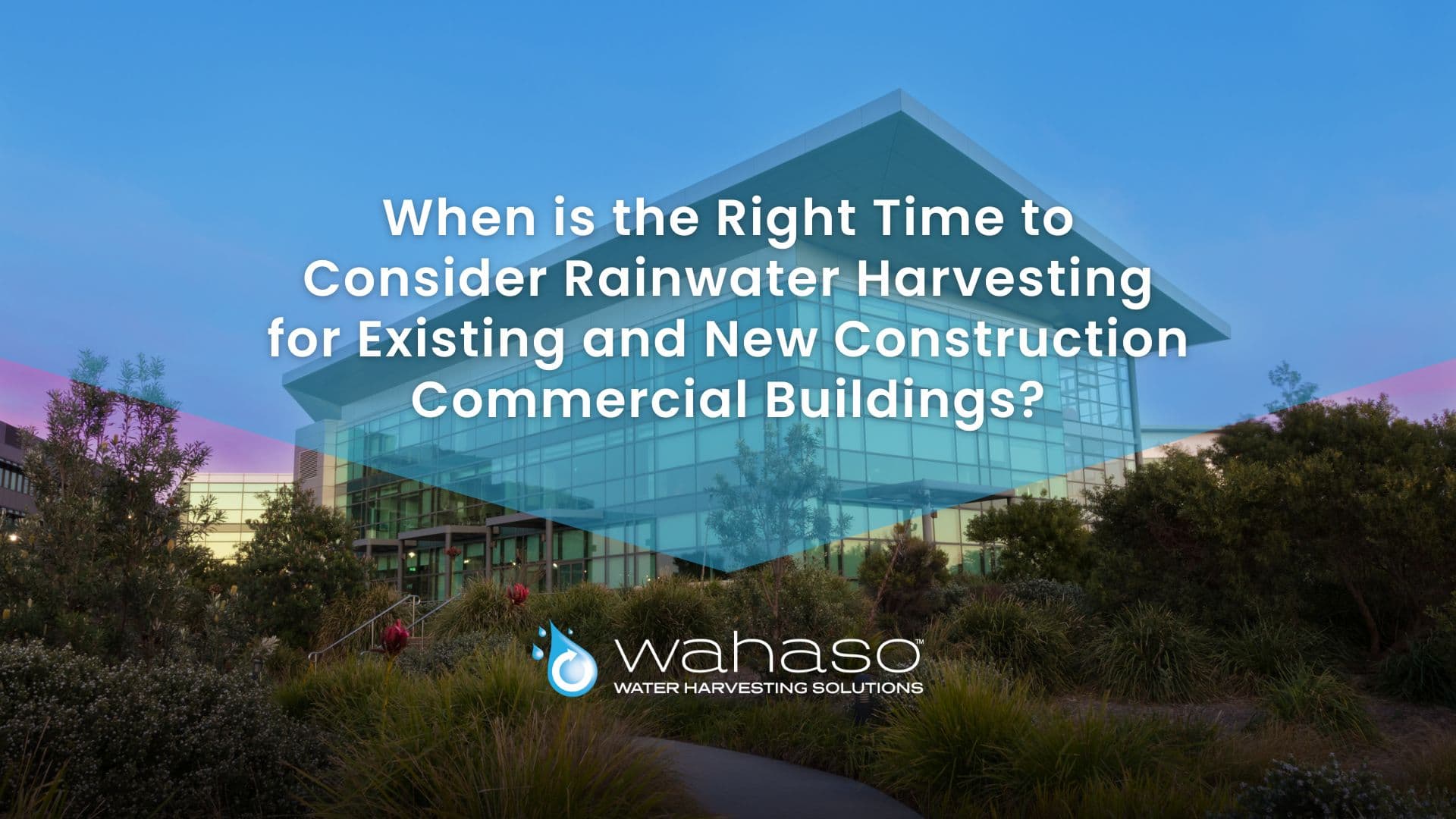When is the Right Time to Consider Rainwater Harvesting for Existing and New Construction Commercial Buildings?

Is now the Right Time to Consider Rainwater Harvesting for Existing and New Construction Commercial Buildings?
As water scarcity becomes an increasingly pressing global issue, innovative solutions, like rainwater harvesting, are required to reduce reliance on limited potable water sources. In fact, rainwater harvesting has emerged as a sustainable and cost-effective method for addressing water scarcity challenges, and when applicable, one of the easiest sources to capture for both existing and new construction projects. While often associated with residential applications, rainwater is also often suitable for commercial offices, retail settings, and manufacturing plants. Here, we will explore the right time to consider rainwater harvesting for such projects, while highlighting the things to consider during the concept and design process.
Benefits of Rainwater Harvesting
Water Conservation:
Rainwater harvesting helps developers and owners reduce their reliance on municipal water supplies and public groundwater sources. By collecting, storing, and treating rainwater, commercial buildings often present a significant reduction in overall water consumption and municipal water expenses, while helping reduce the strain on local water infrastructure.
Sustainable Practices:
Integrating rainwater harvesting systems aligns with corporate Sustainability and ESG goals, and demonstrates a commitment to environmentally responsible practices. It also reduces the carbon footprint associated with water transportation, treatment, and distribution, and discharge.
Water Quality:
Rainwater is generally of higher quality than stormwater or groundwater, and typically does not require sterilization, so does not contain chemicals which are added during municipal water treatment processes. As with any treated water, it may be used for irrigation, toilet flushing, cooling tower makeup, laundry, and any other non-potable demand category.
Considerations for Existing Commercial Buildings
Site and Building Assessment:
When considering rainwater harvesting for existing buildings, a comprehensive site assessment is often called for to evaluate the feasibility of capturing and conveying rooftop rainwater for treatment and downstream use. Factors such as roof area and rooftop availability, rainfall seasonality, and existing infrastructure should be considered. It’s also critical to assess the potential water demand volume, and type of potential applications for the treated rainwater.
Retrofitting:
Existing buildings may require retrofitting to accommodate rainwater harvesting systems. This could involve installing gutters, downspouts, above or subterranean storage tanks, accessing sewer and plumbing infrastructure, and allocating a location for the water harvesting system itself. Water harvesting implementation may be considered within a broader timeframe than that of new construction, as the building already exists, however, the retrofitting process must be carefully planned in advance, so as to minimize disruption to daily operations.
Considerations for Rainwater Harvesting in New Construction Buildings
Design Integration:
The ideal time to consider rainwater harvesting for commercial new construction is during the Schematic Design and Design Development. It may still be feasible during Construction Documents Phase, but it’s often more challenging to integrate a water harvesting system if a building design hadn’t previously incorporated required design parameters. By considering rainwater cisterns, gutter and downspout systems, and water harvesting system skids into earlier design phases, water harvesting may be seamlessly customized for and incorporated into the project.
Let’s Get Your Questions Answered!
Click the our complimentary Free Analysis link and fill out the preliminary information and we can quote your commercial water harvesting project and or schedule an info call.
Since 2004
Wahaso Mission
Our mission at Wahaso is to help municipalities and commercial property owners reduce the impact of their buildings on the environment through innovative and sustainable water practices.


